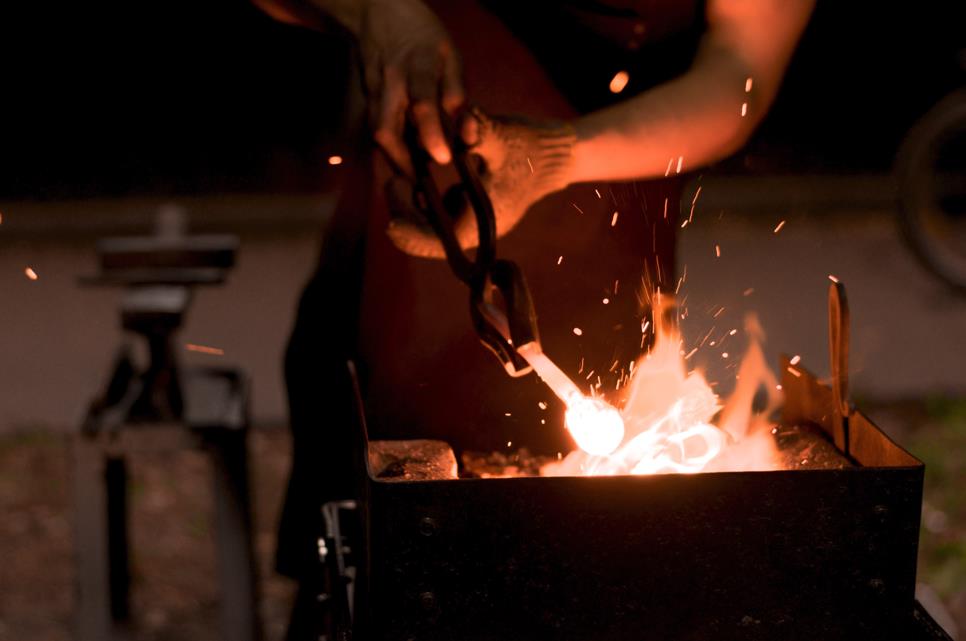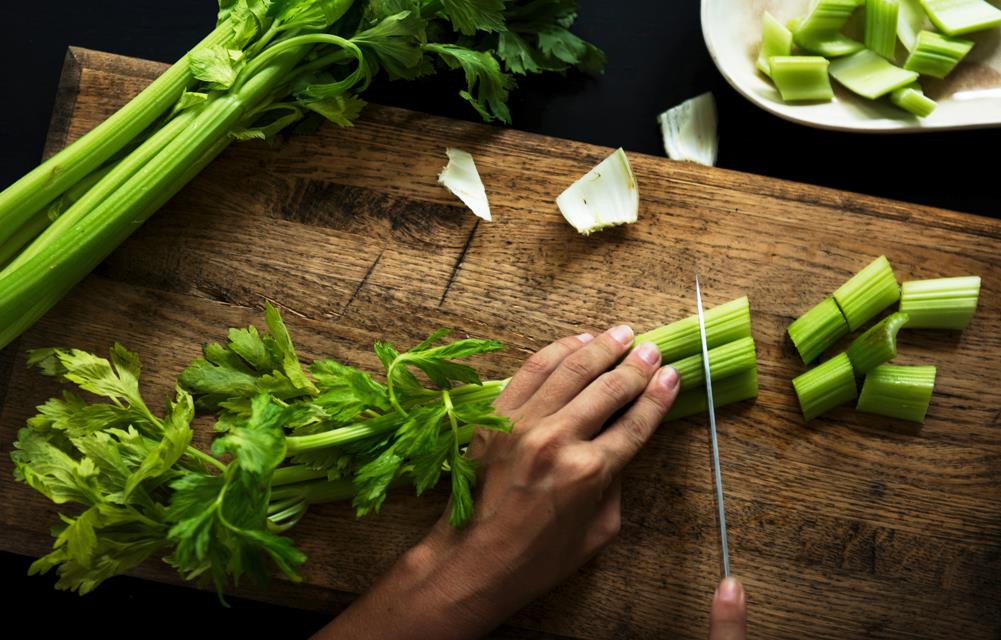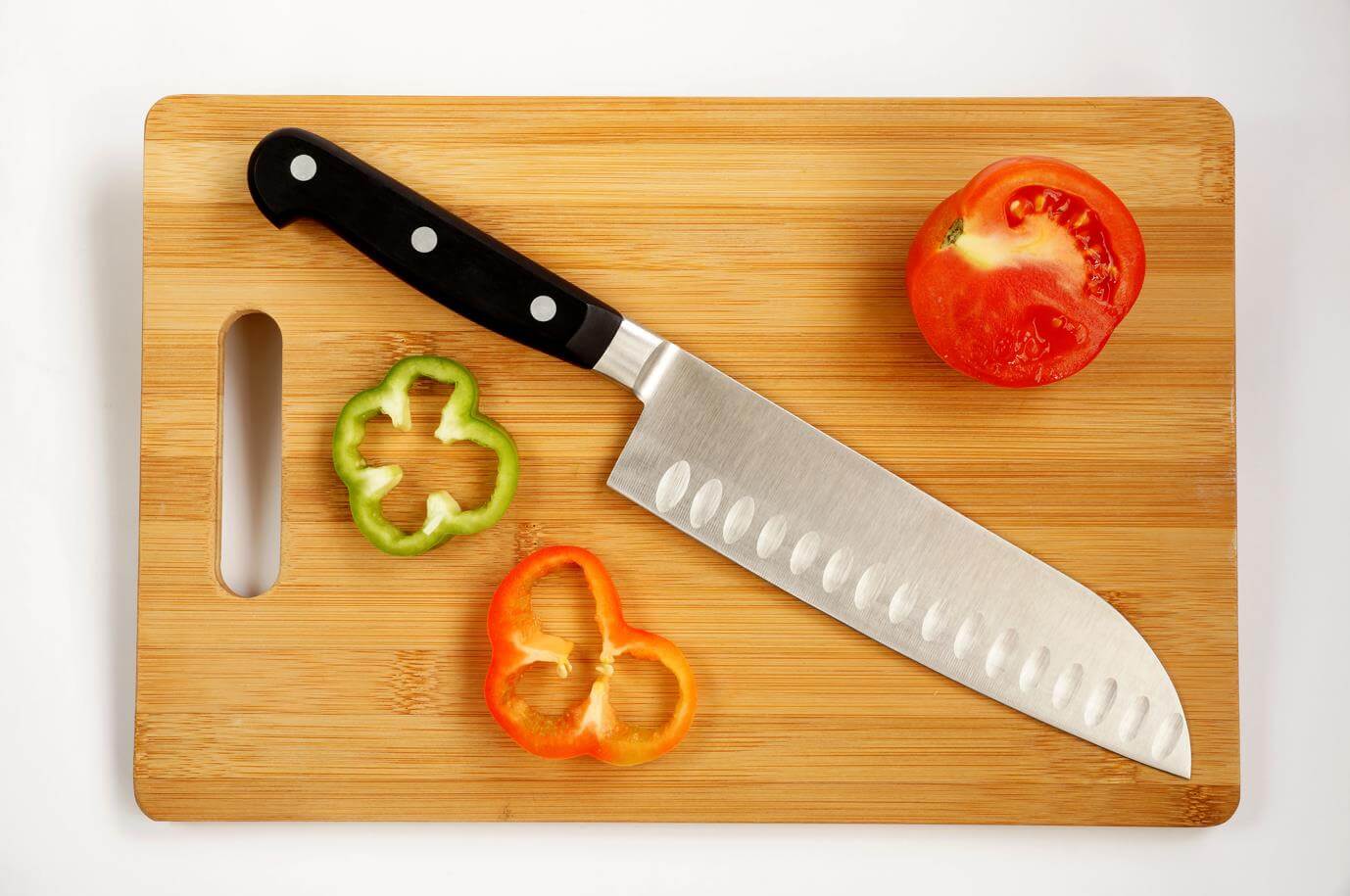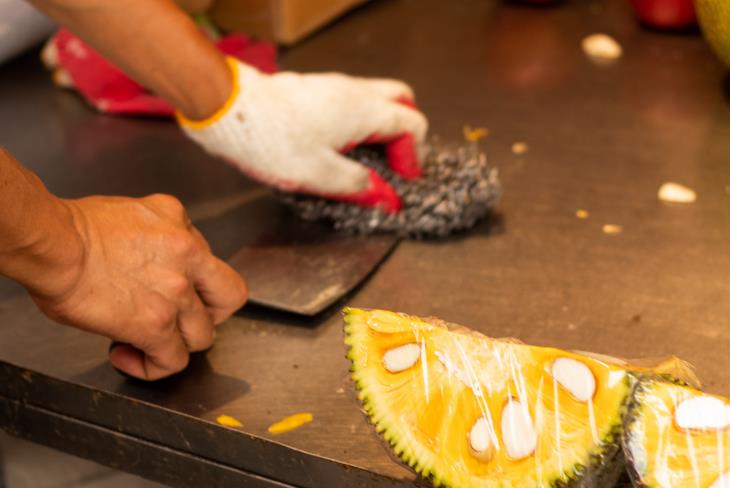Professional chefs and novice home cooks will all agree that high-quality knives should be a standard part of any kitchen. And when they come down to cases, they talk more and more about the Santoku knife uses. But what is a Santoku knife at all?
The Santoku knife originates from Japan. Its name means three uses, suggesting that even the three basic ingredients, fish, meat, and vegetables can be sliced with it flawlessly.
It is lightweight and is perfectly handy thanks to its thin and short blade. These important features help to ensure that several hours of kitchen work is not tiring with using a Santoku knife.
If you maintain it properly, it will be your favorite kitchen knife for many years to come. Read on to get to know all the important information about Santoku knives and find out how you can choose the one that works best for you!
Table of contents
History of the Santoku knives

The first Santoku knives only appeared on the markets in the 1940s and were immediately a huge success. In Japan, after the Second World War, meat consumption and the demand for making and consuming more varied food increased significantly.
However, it has become inconvenient to have to use a different type of knife for each ingredient, and it has also increased the time spent in the kitchen.
The blacksmiths have therefore developed the distinctive shape of the versatile Santoku knives, which have enjoyed unbroken popularity ever since. No longer just in Japan, but around the world.
Santoku knife uses: what is it good for?
This exceptional kitchen tool can be used for any food you want to slice, dice, chop, or mince. You can easily chop all kinds of boneless meats or dice vegetables and fruits.
From thinly slicing fish or cheese to mincing herbs, you will surely perform the various cutting tasks precisely with a Santoku knife.
Santoku knife techniques: how to use a Santoku knife exactly?
To get the most out of it, the Santoku knife has to be used with slightly different hand movements than a traditional chef’s knife.
Slicing
Slicing with a Santoku knife is very easy, as it requires no effort due to its perfect weight distribution. All you have to do is when you move the knife down, you pull it slightly away from you in the meantime. You don’t have to push the knife straight down like you would do with most varieties.
It will take a little practice to get used to it, but in return it will definitely not damage the ingredients and the slices will be evenly thin and perfect.
Chopping and dicing

If you’ve heard of rocking motion style chopping, you can quickly forget that if you want to use a Santoku knife. The rocking motion is when you chop with a knife while keeping the tip of your blade constantly on the cutting board.
However, the Santoku blade is less suitable for this due to its shape, as its edge is almost completely straight. This is where the Santoku style comes into play.
Simply bend your fingers into the “claw” position to make sure you don’t cut yourself. Then grab the ingredient you want to cut, start chopping with short movements. Simply up-and-down movements while pushing the knife slightly forward. After each cut, lift the knife completely off the cutting board.
It may seem complicated at first, but it’s not, you just have to practice. The knife does not need to be pressed hard, so the blade just makes contact with the cutting board, which also extends the life of the edge.
Mincing
The Santoku knife does a very good job in the kitchen even when it comes to mincing. You can quickly and precisely mince garlic or fresh herbs without destroying their texture.
You have to do it exactly as if you were doing chopping or dicing. Once you’ve got enough involved in the precise execution of meticulous moves, you can easily speed up the process. With the hand you are holding the ingredient with, start pushing it slowly towards the knife as you cut.
In the video below, you can see exactly how to use Santoku when it comes to slicing, dicing, chopping and mincing as well.
What are the main features of a Santoku knife?

Size
The blade of Santoku knives is typically between 5 and 7 inches (12.5 to 18 centimeters). They have shorter blades than traditional chef’s knives, making them easier to handle.
Together with the knife handle, the total length of a Santoku knife is usually between 10.5 and 12.5 inches (26.6 to 31.7 centimeters).
Weight
Even the larger Santoku knives with a 7-inch-long blade are surprisingly light. They usually weigh no more than 6 ounces (about 170 grams) thanks to the thin blades.
Shape and design
The uniqueness of Santoku knives lies largely in the design of the blade, which resembles a wide sheep’s foot. The spine of the blade curves down to the straight cutting edge, creating the characteristic shape and thus allowing a perfectly straight and even cut.
The Santoku blade
The blades of Santoku knives are made of harder steel such as high carbon steel allowing for powerful cutting movements without effort. Japanese steel blades are thinner than the usual blades, so the total weight of the knife is also less. And because of its hardness, it retains its exceptional sharpness for longer.
The Santoku blades can also be made of ceramic, however, those made of metal are more preferred as they are more durable and easier to resharpen.
Some of the Santoku blades have oval indentations along their length. This is called Granton edge, and in addition to being flashy, it also has benefits. During slicing, the air remaining in the indentations helps to make the ingredients stick less to the blade.
It is equally true for all varieties that due to the width of the blade, you can easily transfer the finely sliced ingredients from the cutting board right to the pan.
The handle
The traditional handle of Santoku knives comes with no bolster and is most often made of wood, mainly white-bark magnolia, mahogany, or blackwood. Its appearance is simple, but aesthetic and elegant.
Because the handle is light, the balance point of the knife moves toward the blade. That’s why it’s so easy to cut exceptionally thin slices with it, as the blade almost goes through the ingredient you want to cut, on its own.
How to upkeep a Santoku knife?
Cleaning

It is very important not to put the Santoku knife in the dishwasher. Heavily flowing water can move the knife, possibly stumbling on dishes or other knives. And that hurts the sharpness of the Santoku blade. Instead, wash gently in lukewarm water and wipe dry with a soft towel.
Sharpening
Even the highest quality Santoku knives need to be sharpened every 1-2 months. A knife sharpening master can efficiently do it for you, but it is also easy to do at home.
Due to the exceptional thinness of the blade, the use of honing steel is not recommended because it can do more harm than good. Use whetstone instead.
Whetstones are available in different hardnesses, all of which have in common that they need to be soaked before use. After soaking, place the blade of the knife at an angle of 10-15 degrees and gently pull it through several times.
You can get more help on the exact process of Santoku knife sharpening in the video below.
Storage
Once your knife is perfectly clean and you have already sharpened it, it is time to pay attention to proper storage as well.
Improper storage is when the edge of the knife is not protected. For example, they lie on top of each other in the drawer. This not only destroys the edges of the knives, but is also seriously dangerous.
If you want to store them in a drawer, get a container that exactly fits the size of your knives so they won’t move when you pull out the drawer.
However, the best solution is to store your Santoku knives on a wall-mounted magnetic stripe. Not only does it provide a modern and sophisticated look, it is safe for you and your knives as well.
When applied to the magnetic stripe, the edges of the knives do not touch other materials and are therefore not chipped. And you can easily place the magnetic stripe in a place in the kitchen where it is at a safe distance from pets and children.
How to choose a Santoku knife?
There are many varieties of Santoku knives, but they are not that difficult to choose from, because each has its own features. Their blades are thin, extremely sharp, light and easy to handle. In addition, your personal preferences may influence your choices.
Size
The first thing you need to consider is the size of the knife you want to buy. If you’re clueless, It’s best to start with an average 5.5-inch (14-centimeter) blade-length Santoku.
You can feel the weight of the knife, and last but not least, you can try to see if the handle feels well balanced. There are no two people with the same hands, so it’s important to take this step to make sure you’re comfortable with it.
Price
Price can also be a deciding factor. Santoku’s price varies from tens to hundreds of dollars.
Appearance
Finally, for many people, the color of the handle, the patterns engraved in the blade, and the appearance of the knife itself play a big role in the choice. These are all aspects worth considering if you want to buy a Santoku knife.
Other knife classics
Get 11% off and free shipping – limited time only!
Summary
A Santoku knife can be an ornament of your kitchen and one of your most useful tools at the same time. The uncrowned king of precision slicing, one of the most versatile kitchen knives.
The perfect technique for using it is easy and quick to learn. Every moment of learning is guaranteed to be enjoyable and soon you can become the master of the Santoku knife uses. And don’t forget to check out our latest collection of handmade knives in our online store!












